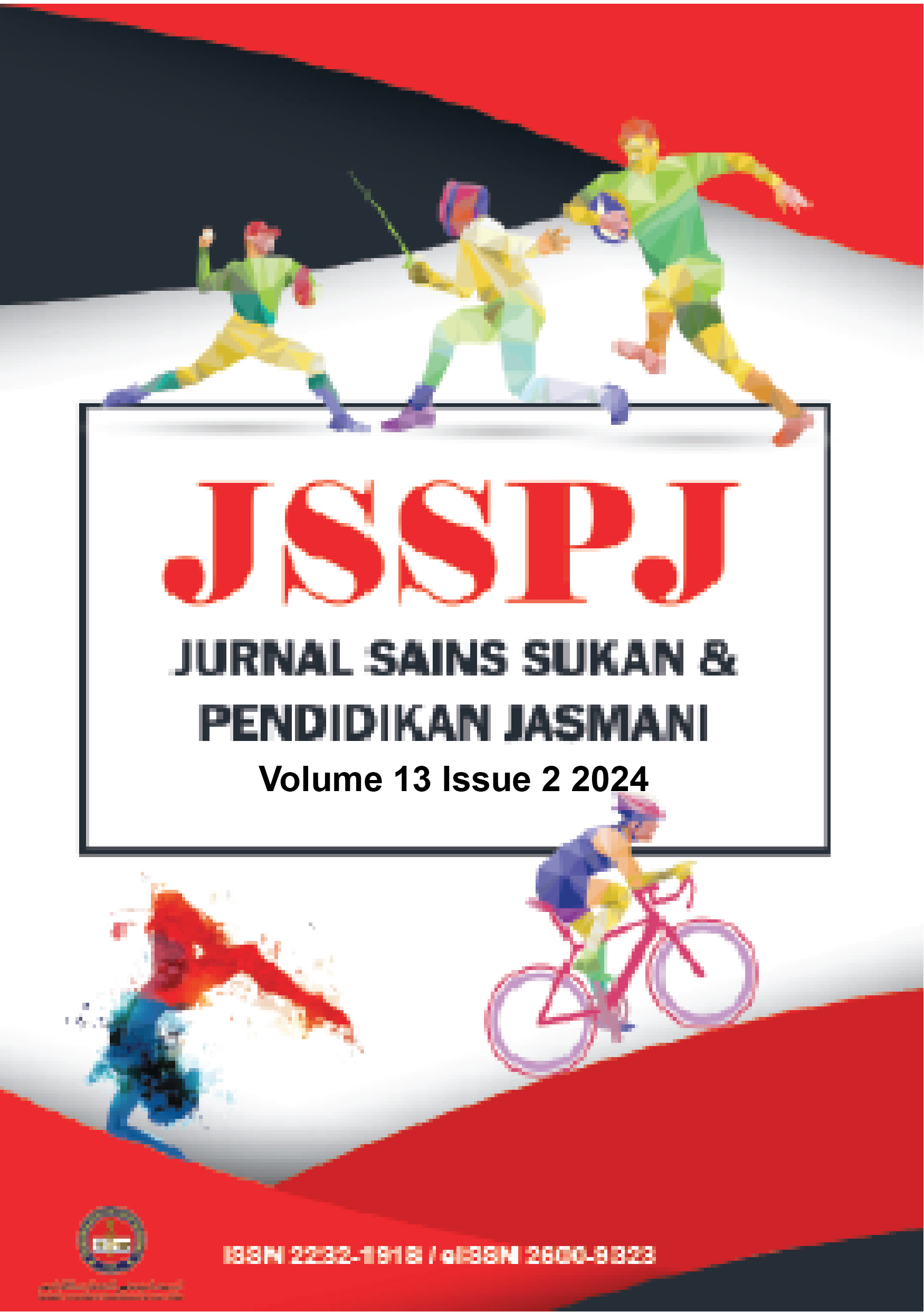The Level of Motivation Towards Physical Activity Class among Physical and Health Education Students in UiTM Puncak Alam
DOI:
https://doi.org/10.37134/jsspj.vol13.2.2.2024Keywords:
physical activity, motivation levels, educational institutions, sport facilities, teaching methodologiesAbstract
This research investigates the motivation levels of university students enrolled in physical activity classes, focusing on the Department of Physical and Health Education at UiTM Puncak Alam in Selangor. The study addresses four primary research questions: (I) What is the level of motivation among university students in physical activity classes? (II) What strategies can be implemented to enhance motivation in physical activity classes among university students? (III) What is the relationship between motivation levels and strategies to enhance motivation in physical activity classes? (IV) Are there differences in motivation levels in physical activity classes between men and women? By examining these questions, this research seeks to uncover factors that either contribute to or hinder students' motivation in physical activity classes within a university setting. The findings indicate that university students generally exhibit a high level of motivation in physical activity classes, highlighting the potential for educational institutions to leverage this motivation for long-term health benefits. Furthermore, the study underscores the importance of universities providing support and encouragement for physical activity through the availability of on-campus sports facilities. The data were collected from 165 students from the physical and health education department in UiTM Puncak Alam, Selangor. One instrument was used in this research to collect the data. Questionnaires were used to identify the students’ motivation level in physical activity class and strategies used by the lecturers during the class. The results of this study add value to our understanding of the subject matter and have important implications for the education sector, particularly in enhancing teaching methodologies. The study's insights provide valuable guidance for optimizing the teaching and learning of Physical Education within academic settings.
Downloads
References
Cooper, D. R., & Schindler, P. S. (1998). Business research methods (6th ed.). McGraw-Hill.
Cox, A. E., Smith, A. L., & Williams, L. (2008). Change in physical education motivation and physical activity behavior during middle school. Journal of Adolescent Health, 43(5), 506-513. https://doi.org/10.1016/j.jadohealth.2008.04.020
Dishman, R. K., & Sallis, J. F. (1994). Determinants and interventions for physical activity and exercise. In C. Bouchard, R. J. Shephard, & T. Stephens (Eds.), Physical activity, fitness, and health: International proceedings and consensus statement (pp. 214-238). Human Kinetics.
Fazwan Kharuddin, M. A., Norazman, M. S., & Ali, M. A. (2020). Discussion on sample size determination using the Krejcie and Morgan table.
Khoo, S., Poh, B. K., Suhaimi, S. A., Chong, K. H., & Ramirez Varela, A. (2020). Physical Activity Promotion in Malaysia: Challenges and Opportunities. Frontiers in Public Health, 8. https://doi.org/10.3389/fpubh.2020.536239
Martin, A. J. (2008). Enhancing student motivation and engagement: The effects of a multidimensional intervention. Contemporary Educational Psychology, 33(2), 239– 269. https://doi.org/10.1016/j.cedpsych.2006.11.003
Norsuhaily Abu Bakar, Mohammad Shaban Alsmadi, Zuraina Ali, Auwallu Shuaibu, & Mohd Hamidi Solahudin. (2022). Influence of Students' Motivation on Academic Achievement. Journal of Positive School Psychology, 3443 – 3450.
Ntoumanis, N. (2001). A self-determination approach to the understanding of motivation in physical education. British Journal of Educational Psychology, 71(2), 225-242. https://doi.org/10.1348/000709901158497
Ntoumanis, N., & Standage, M. (2009). Motivation in physical education classes: A self-determination theory perspective. Theory and Research in Education, 7(2), 194-202. https://doi.org/10.1177/1477878509104324
Piggin, J. (2020). What Is Physical Activity? A Holistic Definition for Teachers, Researchers and Policy Makers. Frontiers in Sports and Active Living, 2(72). https://doi.org/10.3389/fspor.2020.00072
Pintrich, P. R., & De Groot, E. V. (1990). Motivational and self-regulated learning components of classroom academic performance. Journal of Educational Psychology, 82(1), 33-40. https://doi.org/10.1037/0022-0663.82.1.33
Ryan, R. M., & Deci, E. L. (2000). Self-determination theory and the facilitation of intrinsic motivation, social development, and well-being. American Psychologist, 55(1), 68-78. https://doi.org/10.1037/0003-066X.55.1.68
Singh, R. (2016). The Impact of Intrinsic and Extrinsic Motivators on Employee Engagement in Information Organizations. Journal of Education for Library and Information Science, 57(2), 197–206. https://doi.org/10.3138/jelis.57.2.197
Wery, J., & Thomson, M. M. (2019). Motivational strategies to enhance effective learning in teaching struggling students. Support for Learning, 28(3), 103–108. https://doi.org/10.1111/1467-9604.12027
Downloads
Published
Issue
Section
License
Copyright (c) 2024 Syed Muhammad Farhan, Azlan Ahmad Kamal

This work is licensed under a Creative Commons Attribution-NonCommercial-ShareAlike 4.0 International License.





